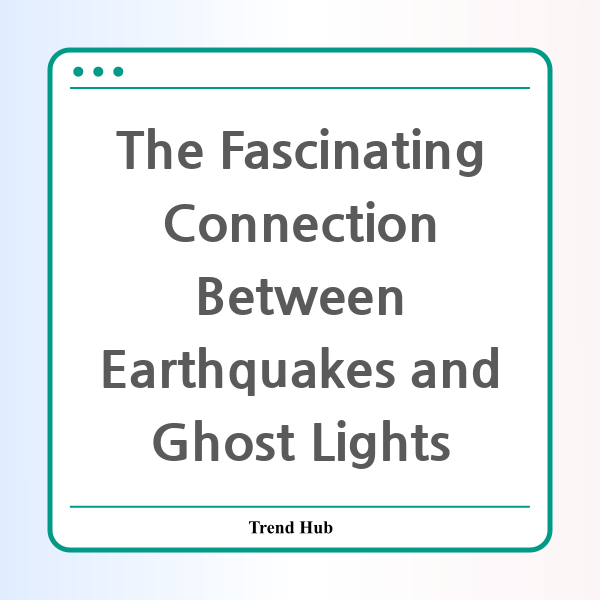* This website participates in the Amazon Affiliate Program and earns from qualifying purchases.

Have you ever heard tales of eerie lights flickering in the night sky or glowing mysteriously along old railroad tracks? If you live in or near areas like South Carolina, you may have encountered local folklore that speaks of ghostly lanterns. But what if I told you that these sightings might have a scientific explanation related to earthquakes?
Recent studies have proposed that the so-called "ghost lights" witnessed in regions like Summerville, South Carolina, are not supernatural phenomena, but rather a little-understood occurrence known as earthquake lights. These luminous displays may flash, glow, or spark at the moment seismic activity takes place, capturing the attention and curiosity of residents and researchers alike.
According to a geophysicist from the U.S. Geological Survey, these lights might be linked to the release of deep-earth gases like methane or radon that ignite when they encounter static electricity generated by rock movements or friction. In fact, there have been well-documented instances of earthquakes in Charleston, with over 158 recorded since the year 2000. This seismic history adds credibility to the theory that local folklore has a basis in reality.
Interestingly, the tales of ghostly sightings aren’t limited to South Carolina. In Maco Station, North Carolina, a ghostly figure of a decapitated train conductor is said to roam the railroad tracks, illuminating the way with a lantern. What’s fascinating here is the recurring theme: ghosts associated with railroad tracks often appear with lanterns. Why is this the case? Researchers suggest that many of these sightings could also be attributed to the same phenomenon of earthquake lights.
As a seismologist delved deeper into the haunting stories surrounding Summerville’s abandoned rail lines, they uncovered a rich tapestry of local history mixed with earthquake activity. The U.S. Geological Survey has identified this region as a site of past significant seismic events, including the powerful 1886 earthquake that devastated Charleston. With smaller quakes occurring in the following decades, the idea that these ghost sightings correlate with seismic activity gains traction.
So how exactly do earthquake lights form? The theory proposes that gases escaping through underground fractures in fault zones can become trapped in water vapor. When these gases then ignite upon exposure to oxygen, they create a dazzling display of light right above the fault line. Additionally, the movement of trains and the static electricity they produce may further enhances these luminous phenomena.
While not all ghostly phenomena can be attributed to earthquakes—some might just be reflections from headlights or other benign sources—the potential link between seismic activity and ghost lights is intriguing. It opens up avenues for more scientific investigation to understand better where these lights are seen and the geological underpinnings of these occurrences.
Beyond the sheer fascination of uncovering a natural explanation for local legends, understanding the relationship between earthquakes and phenomena like ghost lights is essential. The Eastern U.S. may not experience earthquakes with the same frequency as places like California, but the risks are still present, as reminded by the 2011 magnitude 5.8 earthquake in Virginia that was felt as far as 80 miles away.
If we can connect folklore with scientific inquiry, we not only enrich our understanding of local history but also prepare ourselves better for future seismic risks. The next time you see a mysterious light while driving through an area known for its ghost stories, remember: it could be more than just a figment of local imagination. It could be nature illuminating its powerful forces just beneath our feet.
* This website participates in the Amazon Affiliate Program and earns from qualifying purchases.